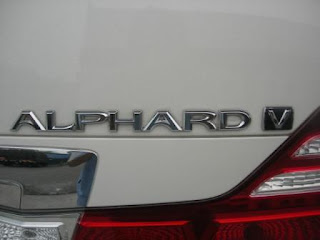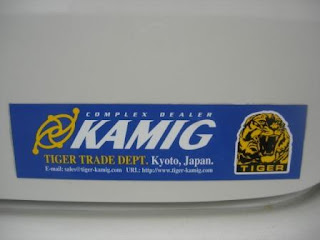To access to the DVD player, you'll need to press the "EJECT" button at the bottom left of the head unit. It will display the following screen for you to select which option you need.
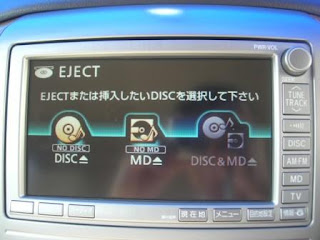
When you touch the "DISC" image on the LCD, it will flip open the LCD panel for you to have access to the DVD slot as shown below.
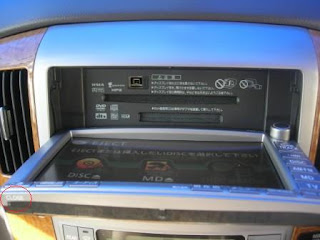
If there is already a disc inside the DVD slot, touching the "DISC" image will eject that disc.
Once you inserted your CD/DVD into the DVD slot, you'll press the same "EJECT" button (now labelled CLOSE when view from the flip-opened position - see red circle) to close the LCD panel.
In this post, I will cover the music playing function of the DVD player while the future post I will cover the video function of the DVD player.
If you inserted a music CD into the DVD player, it will automatically start playing the music as well as automatically store (a configurable option) the CD tracks into the 30GB hard disk (if this CD has not been recorded before). The tracks from the CD are stored into the hard disk in the background while you play the tracks on the CD.
You know that the tracks on the CD are being stored 1st time into the hard disk by looking at the phrase "REC FAST" displayed at the top of the play time of the current track as shown below.
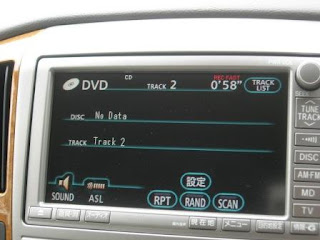
If you touch the "TRACK LIST" button at the top right on the LCD screen, it will take you to the TRACK LIST screen (see photo below) and you'll noticed that each track that has been stored hard disk will have the word "HDD" on the top left of each track title.

Once all the tracks on the CD has been stored, you can play the tracks again from the hard disk directly instead of inserting the same CD. Of course if you choose to, you can still play the CD track directly from the disc. To know whether the track is played from the CD or from the HDD, just looked at the title at the top left corner of the screen whether it is showing DVD or HDD (as shown below)
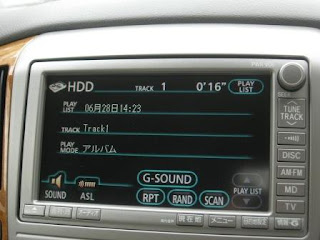
The time it take to store the tracks varied depending on the contents in your CD. It is advisable to play the CD long enough for the store operation to complete otherwise not all tracks will be stored into the hard disk. However, if you do stop the car while the recording is in progress, the next time when you play the same CD again, it will continue the recording from where it left off.
In the DVD play mode screen (see the 3rd photo from the top), there are a few buttons at the bottom right that you can "touch" to configure how the tracks are played. You can elect to repeat (RPT) a particular track, randomly (RAND) play a track or scan all track (SCAN). You can also control whether the CD tracks will be recorded automatically into the hard disk by touching the "設定" button. It will bring you to the following screen where you can opt to either automatically record (AUTO) or manually (SELECT) record the tracks.
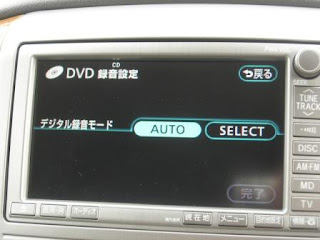
BTW, the button at the top right of each screen is the return/cancel (戻る) button. Touch it to return to the previous screen.
In the next post, I'll describe in further details how to operate the HDD functions.







